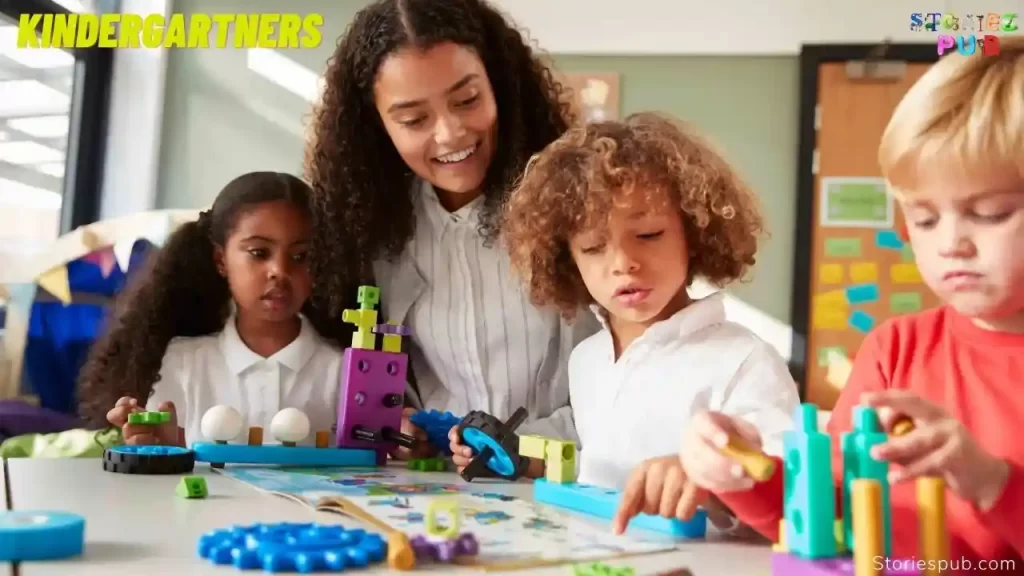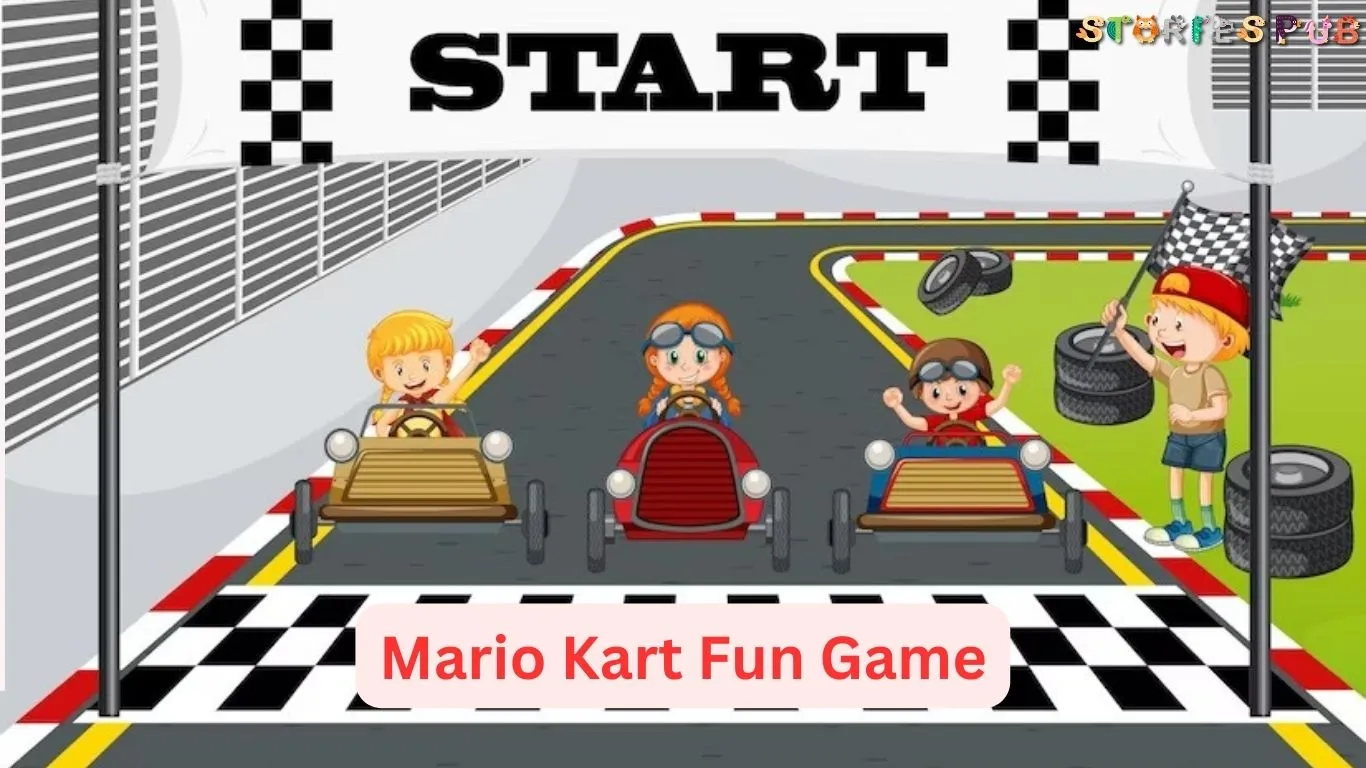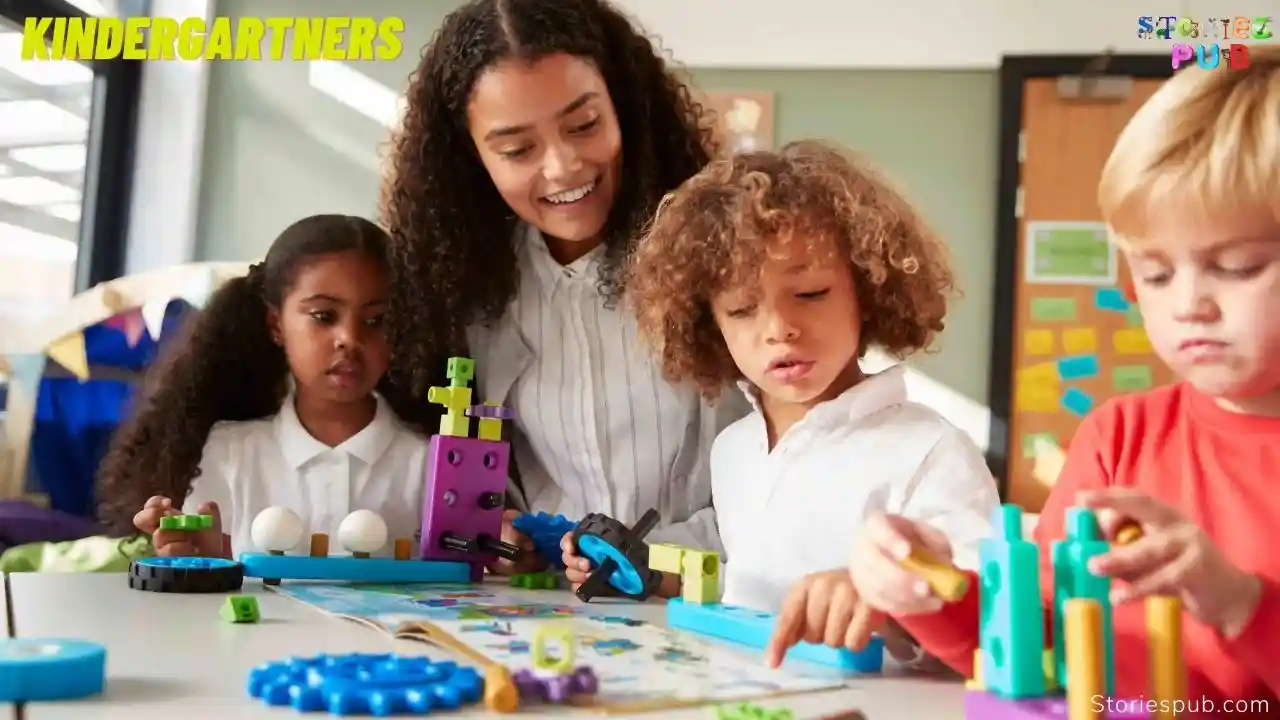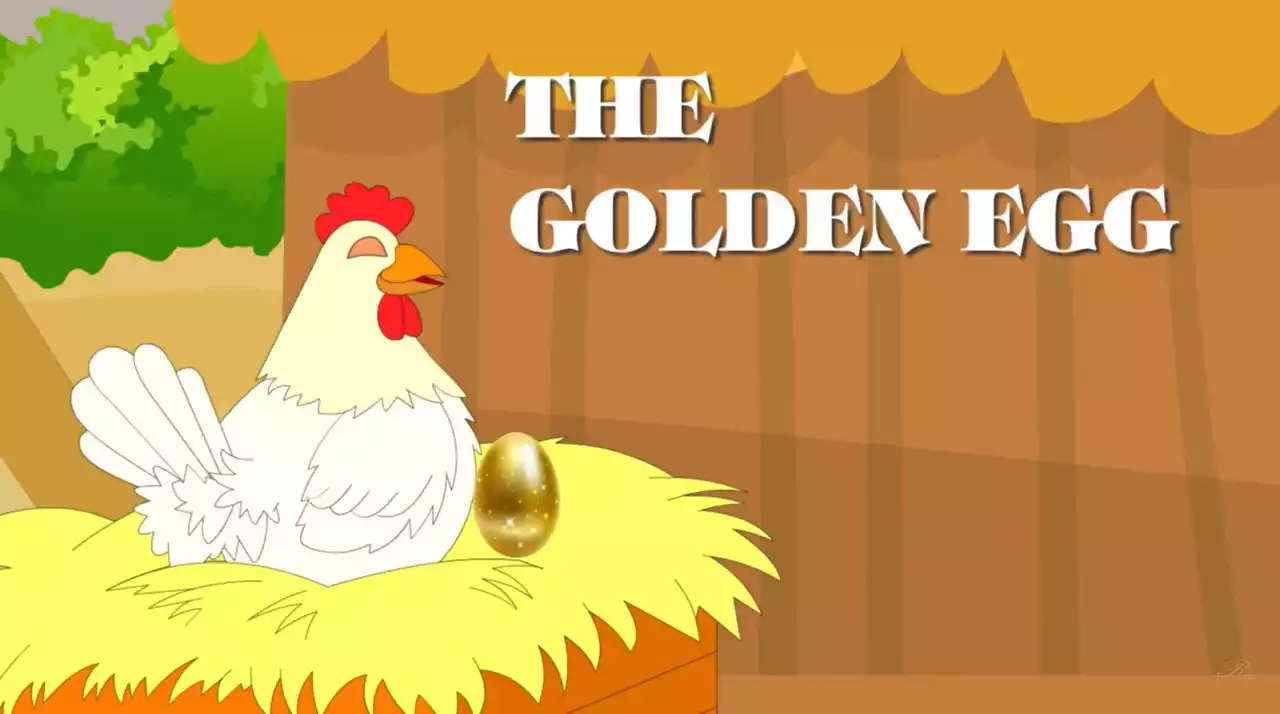Games To Play With Kindergartners

Are you a teacher or a parent of a child who is studying in kindergarten and you are searching for the games to play with them, then your search is over? We provide you with the games to play with kindergartners along with rules and information so that you can keep your child healthy, mentally as well as physically. This is the perfect age for a child to learn skills and sportsman spirit.
Children who are in kindergartner are at an age of curiosity and they are unpredictable. They are eager to learn about and talk about a range of topics, ideas, and tasks.
In this blog post, we will take a look at some of the best games kindergartners can play that will also help promote their cognitive growth with age-appropriate activities! Read on to discover the perfect game for your little ones this season.
Games to Play with Kindergartners Inside
Simon Says
- Choose one child to be Simon.
- Simon gives instructions to the other children, such as “Simon says touch your toes” or “Simon says hop on one foot”.
- The other children have to follow the instructions, but only if Simon says “Simon says” first.
- If Simon gives an instruction without saying “Simon says” first, the children should not do the action.
- Any child who does the action when they weren’t supposed to is out.
- The last child standing becomes the new Simon.
The game can be made more challenging by using complicated instructions or by adding movements that require more than one step, such as “Simon says touch your nose, then spin around, then clap your hands”.
Red Light, Green Light
- Choose one child to be “it”.
- The other children line up facing the “it” player, several feet away.
- “It” stands with their back to the other children and says “Green light”.
- The other children then move towards “it” as quickly as they can, as long as they hear “Green light”.
- At any time, “it” can turn around and say “Red light”. When they do, all the other children must freeze.
- If “it” sees any child still moving after saying “Red light”, that child is out.
- The game continues with “it” saying “Green light” and “Red light” at intervals, until only one child is left.
- That child becomes the new “it” player and the game starts again.
The game can be made more challenging by adding more players or by making the distance between the players and “it” farther.
Balloon Volleyball
- Divide the children into two teams.
- Inflate a balloon and have each team stand on opposite sides of a low net, or a rope tied between two chairs.
- Serve the balloon to the other team by tapping it with your hand. The other team must try to hit the balloon back over the net.
- The game continues until the balloon hits the ground, or until one team fails to hit it back over the net.
- The team that successfully hits the balloon over the net scores a point.
- Play continues until one team scores a predetermined number of points or until a set time limit is reached.
- The winning team is the one with the most points at the end of the game.
The game can be made more challenging by increasing the height of the net or by adding more balloons to the game.
Animal Charades
- Write down a list of animals on separate pieces of paper, such as a lion, a monkey, or a penguin.
- One child chooses a piece of paper with an animal on it, without telling anyone else what it says.
- That child then acts out the animal without making any sounds, while the other children try to guess what animal they are pretending to be.
- The child who guesses correctly gets to act out the next animal.
- If the children are struggling to guess the animal, the person acting can give clues such as the sound the animal makes or where it lives.
- Play continues until everyone has had a turn or until a set time limit is reached.
The game can be made more challenging by using more difficult animals or by limiting the amount of time the acting child has to act out the animal.
Beanbag Toss
- Place a large board or piece of cardboard on the ground and draw a target on it, with different point values for different sections.
- Place the board at an angle or elevate it slightly, to make it more challenging.
Give each child three beanbags to toss.
- Each child takes turns tossing the beanbags towards the target, trying to get as many points as possible.
- If a beanbag lands on the target, they get the corresponding number of points.
- If a beanbag lands outside the target, they get no points.
- The child with the highest number of points at the end of the game wins.
The game can be made more challenging by moving the target farther away or by adding obstacles in the way of the target.
Hide and Seek
- Choose one child to be “it”.
- The child who is “it” closes their eyes and counts to a predetermined number, such as 20 or 30, while the other children hide.
- After counting, the child who is “it” begins to search for the other children.
- If a child is found, they are “out” and must sit out for the remainder of the game.
- The game continues until all the children are found or until a set time limit is reached.
- The last child to be found becomes “it” for the next round.
The game can be made more challenging by designating certain areas as off-limits or by allowing the hiding children to move around and change their hiding spots during the game.
It is important to set clear boundaries and safety rules before starting the game to ensure the safety of all players.
Pictionary
- Divide the children into teams of two or more.
- Each team chooses a player to start drawing.
- The other players on the team are the guessers.
- The first player selects a card with a word or phrase on it and must draw a picture that represents that word or phrase, without using any letters or numbers.
- The guessers have a set amount of time to try and guess what the drawing represents.
- If the guessers correctly identify the word or phrase, their team earns a point.
- If the guessers are unable to correctly identify the word or phrase within the time limit, the opposing team gets a chance to guess.
- Play continues with each team taking turns drawing and guessing until a set point limit is reached or a set time limit is reached.
The game can be made more challenging by using more difficult words or phrases or by adding a time limit to the drawing portion of the game.
Additionally, players can agree on certain rules, such as whether stick figures are allowed or not, before beginning the game.
Memory Game
- Place an even number of cards face down on a table or playing surface.
- Each card should have a matching pair with the same picture or word.
- The first player turns over two cards and shows them to all the players.
- If the cards match, the player keeps them and gets another turn.
- If the cards do not match, the player turns them back over and the next player takes a turn.
- Play continues with each player taking turns until all the cards have been matched.
- The player with the most matched pairs at the end of the game wins.
The game can be made more challenging by adding more pairs of cards or by reducing the time limit for each turn.
Additionally, players can agree on certain rules, such as whether it is allowed to look at the cards before turning them over or not, before beginning the game.
Bingo
- Each player is given a Bingo card with a set of numbers on it.
- The caller randomly draws a number from a pool of numbers and announces it to the players.
- If a player has that number on their card, they mark it off with a marker or a Bingo chip.
- Play continues with the caller announcing more numbers and the players marking them off on their cards.
- The goal is to be the first player to mark off all the numbers on their card in a predetermined pattern, such as a straight line, a diagonal line, or a full card.
- When a player has marked off all the numbers in the pattern, they call out “Bingo!” to signal that they have won.
- The caller then checks the player’s card to ensure that all the numbers were properly marked off.
- If the player did indeed mark off all the numbers in the pattern, they win the game.
The game can be made more challenging by using larger Bingo cards with more numbers or by requiring more complex patterns to win.
Additionally, players can agree on certain rules, such as whether it is allowed to use outside resources such as calculators or not, before beginning the game.
Musical Chairs
- Set up a row of chairs back-to-back, with one fewer chair than the number of players.
- Play music while the players walk around the chairs.
- When the music stops, players must sit in a chair.
- The player who is left without a chair is out of the game.
- Remove one chair from the game and continue playing until there is only one player remaining.
- The last player remaining is the winner.
To make the game more challenging, the chairs can be arranged in a circle or other shapes.
Additionally, players can agree on certain rules, such as whether it is allowed to push or shove other players out of the way or not, before beginning the game.
Games to Play with Kindergartners in Class
Alphabet Scavenger Hunt
The alphabet scavenger hunt is a fun game that involves finding objects or items that begin with each letter of the alphabet. Here are the steps to play the game:
- Gather players: You can play this game with a group of friends, family members, or even by yourself.
- Set a time limit: Decide on a time limit for the game. This will depend on how many letters you want to find and how many players are involved. You can set a time limit of 15 minutes, 30 minutes, or an hour.
- Start with the first letter: Begin with the letter “A” and ask each player to find an object that starts with that letter. The object can be anything from around the house or outdoors.
- Move to the next letter: Once a player has found an object that starts with the letter “A”, move on to the next letter in the alphabet, “B”. Each player should find an object that starts with that letter.
- Keep going until you reach the end: Continue through the alphabet until you reach the letter “Z”. The player who finds an object for each letter of the alphabet first, or the player who finds the most objects within the time limit, wins the game.
- Keep track of the objects: Make sure to keep track of the objects that each player finds. You can use a sheet of paper or a whiteboard to keep track of the letters and objects found.
Have fun! Remember, the purpose of this game is to have fun and enjoy the process of finding objects that start with each letter of the alphabet.
Word Bingo:
Word Bingo is a fun game that can help improve vocabulary and spelling skills. Here are the key points on how to play Word Bingo:
- Create bingo cards: Create bingo cards with a 5×5 grid of squares. In each square, write a different word. You can create your own cards or use a template available online.
- Choose a caller: One person will be the caller who will announce the words randomly from a list of pre-selected words.
- Give instructions: Explain the rules of the game to the players. In Word Bingo, the objective is to mark off all the words on your bingo card as they are called out by the caller.
- Begin the game: The caller will announce a word from their list. If the players have that word on their bingo card, they mark it off.
- Continue playing: The caller will continue announcing words until one player marks off all the words on their card and yells out “Bingo!”.
- Verify the win: The caller should check the player’s card to make sure that all the words are correctly marked off. If the player’s card is correct, they win the game.
- Play multiple rounds: You can play multiple rounds with different bingo cards or shuffle the words on the bingo cards to make the game more challenging.
Remember to have fun while playing Word Bingo and encourage players to expand their vocabulary and spelling skills.
Number Line Jump:
Number Line Jump is a fun and educational game that helps children practice counting, addition, and subtraction. Here’s how to play the game:
- Draw a number line: Draw a horizontal line on a piece of paper or whiteboard and label it with numbers from 1 to 20 (or more, depending on the age and skill level of the players).
- Choose a player: Choose a player to start the game.
- Roll the dice: The player rolls a dice and moves their game piece that many spaces on the number line. If they roll a 6, for example, they move six spaces to the right.
- Solve the math problem: Once the player has moved their game piece, they must solve a math problem based on their new position. For example, if they land on 10 and rolled a 3, they must say “10 plus 3 equals 13.”
- Continue playing: The next player takes their turn, rolling the dice, moving their game piece, and solving a math problem.
- Add or subtract: To make the game more challenging, you can change the math problem to addition or subtraction. For example, if a player lands on 15 and rolls a 2, they must say “15 minus 2 equals 13.”
- Win the game: The first player to reach the end of the number line wins the game.
Number Line Jump is a great way to make learning math fun and engaging. You can adjust the game based on the skill level of the players and add additional rules to make it more challenging.
Color Match:
Color Match is a simple and fun game that can be played with children. Here’s how to play the game:
- Gather colored items: Gather colored items like blocks, toys, or pieces of paper in different colors.
- Assign colors: Assign each color to a different body part, like red for hands or blue for feet.
- Call out colors: Call out a color, and players must touch that body part to an item of the same color.
- Continue playing: Keep calling out colors and continue playing until all the items have been matched.
- Play again: Play again with new colors or assign different body parts to colors for added challenge.
Letter Match:
Letter Match is a fun and educational game that helps children learn the alphabet and develop letter recognition skills. Here’s how to play the game:
- Gather materials: You will need letter cards, which can be made by writing each letter of the alphabet on a small piece of paper or index card.
- Shuffle the cards: Shuffle the letter cards and place them face down on a table or the floor.
- Choose a player: Choose a player to go first.
- Draw two cards: The player draws two cards from the deck and turns them over.
- Match the letters: If the two letters match, the player keeps the cards and takes another turn. If they do not match, the player turns the cards back over and it is the next player’s turn.
- Continue playing: Continue playing until all the cards have been matched.
- Win the game: The player with the most cards at the end of the game wins.
To make the game more challenging, you can add a timer to each turn, or play with uppercase and lowercase letter cards.
This game is a great way to help children develop letter-recognition skills and learn the alphabet in a fun and interactive way.
Shape Match:
Shape Match is a game that helps children learn about shapes and develop their shape-recognition skills. Here’s how to play the game in 50 words:
- Gather materials: You will need shape cards, which can be made by drawing or printing shapes on small pieces of paper or index cards.
- Shuffle the cards: Shuffle the shape cards and place them face down on a table or the floor.
- Choose a player: Choose a player to go first.
- Draw two cards: The player draws two cards from the deck and turns them over.
- Match the shapes: If the two shapes match, the player keeps the cards and takes another turn. If they do not match, the player turns the cards back over and it is the next player’s turn.
- Continue playing: Continue playing until all the cards have been matched.
- Win the game: The player with the most cards at the end of the game wins.
To make the game more challenging, you can add a timer to each turn or play with more complex shapes. This game is a fun way to help children develop their shape recognition skills and learn about different shapes.
Sight Word Slap
Sight Word Slap is a fast-paced and interactive game that helps children learns sight words. Here’s how to play the game in 50 words:
- Gather materials: You will need sight word cards and a flyswatter or small paddle.
- Place cards: Lay the sight word cards on a table or the floor.
- Call out a word: Call out a sight word.
- Slap the word: The first player to slap the correct word with the flyswatter or paddle wins the card.
- Continue playing: Keep playing until all the cards have been won.
- Win the game: The player with the most cards at the end of the game wins.
To make the game more challenging, you can add a timer to each turn or play with more difficult sight words. This game is a fun and engaging way to help children learn sight words and improve their reading skills.
Rhyming Bingo
Rhyming Bingo is a fun and educational game that helps children learn about rhyming words. Here’s how to play the game in 50 words:
- Create bingo cards: Create bingo cards with different pairs of rhyming words.
- Distribute cards: Distribute the bingo cards to the players.
- Call out words: Call out words that rhyme with the words on the bingo cards.
- Mark the cards: Players mark their cards when they hear a word that rhymes with a word on their bingo card.
- Get a bingo: The first player to get a line or full house of marked rhyming words shouts “Bingo!” and wins the game.
To make the game more challenging, you can use more complex rhyming words or add a timer to each turn. This game is a great way to help children develop their rhyming skills and have fun while learning.
Indoor Games
Follow the Leader
Follow the Leader is a classic game that is easy and fun to play with a group of children. Here’s how to play:
- Choose a leader: Choose one player to be the leader.
- Start moving: The leader starts moving around, doing different actions like jumping, clapping, or spinning.
- Follow the leader: The other players must follow the leader and mimic the actions they are doing.
- Change the leader: After a few minutes, choose a new leader and start the game again.
- Add challenges: To make the game more challenging, the leader can add new actions, increase the speed of the game, or make the actions more complex.
- End the game: The game can be ended after a set amount of time or when all players have had a chance to be the leader.
Follow the Leader is a fun game that encourages children to be active and develop their listening and coordination skills.
Musical Statues
Musical Statues is a fun game that is perfect for parties and gatherings. Here’s how to play:
- Choose a DJ: Choose one player to be the DJ.
- Start the music: The DJ starts playing music and all the other players start dancing.
- Stop the music: The DJ suddenly stops the music and all players must immediately freeze in place like statues.
- Observe the statues: The DJ observes the players and anyone who is still moving or not frozen is out of the game.
- Restart the game: The DJ starts the music again and the game continues until only one player is left.
- Declare a winner: The last player to remain frozen throughout the game is the winner.
To make the game more challenging, you can add new rules such as requiring players to strike a specific pose when they freeze or allowing players to move only when the music is at a certain tempo. This game is a great way to get children moving and having fun.
Dress-up Relay Race
Dress Up Relay Race is a fun game that requires teamwork and coordination. Here’s how to play:
- Divide players into teams: Divide the players into two or more teams.
- Set up the race course: Set up a race course with a start line and finish line, and place a pile of dress-up clothes, such as hats, scarves, and oversized clothes, at the start line for each team.
- Start the race: The first player from each team races to the pile of clothes, puts on one item of clothing, runs to the finish line, and tags the next player on their team.
- Continue the race: The next player repeats the process until all players on their team have completed the race.
- Declare a winner: The team that completes the race first is the winner.
To make the game more challenging, you can require players to put on multiple items of clothing, such as a hat and scarf, or blindfold players before they race to the pile of clothes.
This game is a great way to encourage teamwork and cooperation while having fun.
Story Chain
Story Chain is a fun game that encourages creativity and imagination. Here’s how to play:
- Start the story: The first player starts telling a story, beginning with the phrase “Once upon a time”.
- Add to the story: After the first player finishes their sentence or two, the next player continues the story with their own sentence or two.
- Pass it on: The story continues to be passed around the circle, with each player adding a sentence or two to the story.
- Keep the story going: The story should continue until all players have had a chance to contribute, or until the story reaches a natural ending.
- End the story: Once the story has reached its conclusion, the last player should wrap up the story with a closing sentence.
To make the game more challenging, you can set a time limit for each player to contribute to the story or add a rule that each player must include a certain word or phrase in their sentence. This game is a great way to encourage creative thinking and storytelling skills.
Twister
Twister is a fun physical game that requires players to place their hands and feet on colored dots on a mat while trying to avoid falling over. Here’s how to play:
- Set up the game: Unroll the Twister mat on a flat surface, such as the floor. Make sure there is enough space around the mat for players to move around. Spin the spinner to determine the first move.
- Begin the game: The first player spins the spinner and then places their left or right hand or foot on the color indicated by the spinner.
- Take turns: The next player then takes their turn by spinning the spinner and placing their hand or foot on the corresponding color. Players must try to avoid touching the mat with any part of their body other than their hands or feet.
- Add complexity: As the game progresses, the positions on the mat can become more challenging, requiring players to twist and bend their bodies into different positions.
- End the game: The game ends when a player falls over, touches the mat with an elbow or knee, or is unable to reach a required position on the mat.
Twister is a great game for kids and adults alike and is perfect for family game nights or parties.
Outdoor Games:
Nature Scavenger Hunt
A nature scavenger hunt is a fun game that encourages children to explore and observe the natural world around them. Here’s how to play:
- Make a list: Make a list of natural items that can be found in the area where you’re playing, such as leaves, rocks, flowers, or insects.
- Set boundaries: Set boundaries for the area where the scavenger hunt will take place, so that children don’t wander too far.
- Hand out the lists: Hand out the lists to each player or team.
- Start the hunt: Set a timer and let the players search for the items on their list. Players can work individually or in teams.
- Check off items: As players find each item on their list, they should check it off.
- Return to the starting point: Once the time is up, players should return to the starting point with their lists.
- Compare lists: Compare lists to see which player or team found the most items.
To make the game more challenging, you can set a time limit, require players to find items in a specific order, or create more difficult lists that include specific types of plants, animals, or geographical features.
This game is a great way to encourage children to explore and appreciate the natural world around them.
Duck, Duck, Goose
Duck Duck Goose is a classic children’s game that is easy to play and requires no equipment. Here’s how to play:
- Form a circle: Players sit in a circle, facing each other.
- Choose a “Goose“: Choose one player to be the “Goose”. The Goose walks around the outside of the circle, tapping each player on the head and saying “Duck” for each player they tap.
- Choose a “Duck”: Eventually, the Goose taps a player on the head and says “Goose” instead of “Duck”. This player becomes the new Goose.
- Chase the Goose: The new Goose stands up and chases the original Goose around the circle. The original Goose tries to run around the circle and sit in the spot that the new Goose just vacated before being tagged.
- Repeat: The game continues with the new Goose walking around the circle and tapping players until a new Goose is chosen.
To make the game more challenging, you can increase the speed of the game or add additional rules, such as requiring players to crawl around the circle instead of walking or designating a specific type of animal for the Goose to say instead of “Goose”. This game is a great way to get children moving and having fun.
Capture the flag
Capture the Flag is a classic outdoor game that is great for larger groups. Here’s how to play:
- Divide players into two teams: Split players into two equal teams, each with their own flag placed in their territory.
- Set boundaries: Define the boundaries of the playing area, making sure there is enough space for players to move around freely.
- Start the game: Both teams start on opposite ends of the playing area, and players try to cross into the opposing team’s territory to capture their flag and bring it back to their own territory.
- Avoid getting tagged: Players who are in the opposing team’s territory are at risk of getting tagged by the other team’s players. If tagged, the player must return to their own territory and start again.
- Protect your own flag: While trying to capture the other team’s flag, players must also protect their own flag from being captured by the opposing team.
- End the game: The game ends when one team successfully captures the other team’s flag and brings it back to their own territory without getting tagged. Alternatively, you can set a time limit, and the team with the most flags captured at the end of the time limit wins.
Capture the Flag is a fun game that can be played in a variety of settings, including parks, backyards, or even indoors with some modifications.
Frisbee
Frisbee is a fun outdoor game that can be played with friends or family. Here’s how to play:
- Gather players: You’ll need at least two players to play Frisbee, but the game can be played with more people if you have enough Frisbees.
- Choose a playing area: Find an open space, such as a park or a beach, where you can safely throw the Frisbee without hitting anyone or anything.
- Choose teams: If you’re playing with more than two players, you can split into teams.
- Start the game: The game starts with one player throwing the Frisbee to another player on their team. The goal is to catch the Frisbee and pass it to another player without dropping it.
- Scoring: You can play Frisbee with or without scoring. If you want to keep score, each time a player catches the Frisbee, they score a point. If the Frisbee is dropped, the other team gets possession.
- Additional rules: You can add rules to make the game more challenging, such as requiring players to catch the Frisbee with one hand or only allowing certain types of throws.
- End the game: The game can end when a team reaches a certain number of points, or you can play for a set amount of time and see which team has the most points when time is up.
Frisbee is a great game to play outdoors, and it’s a fun way to get some exercise and spend time with friends or family.
Tug of war
Tug of war is a classic team game that can be played indoors or outdoors. Here’s how to play:
- Gather players: You’ll need at least two teams of players to play tug of war. The more players on each team, the better.
- Find a rope: You’ll need a sturdy rope that is long enough for each team to hold onto.
- Mark the center line: Use cones or markers to mark a center line on the ground, so each team knows where to stand.
- Form teams: Divide the players into two equal teams and have them stand on either side of the center line.
- Grab the rope: Each team should grab onto the rope, with their hands spaced evenly apart.
- Start the game: When the referee signals, each team tries to pull the rope over the center line, causing the other team to lose their balance and fall.
- Scoring: The game is won when one team successfully pulls the other team across the center line.
- Safety: Make sure players wear appropriate shoes and have a good grip on the rope. It’s also important to have an adult or responsible person supervise the game to ensure safety.
Tug of war is a fun game that can be played with friends or family, and it’s a great way to build teamwork and communication skills.
Conclusion
Playing games is an excellent way to teach young children important skills while keeping them entertained and engaged. By playing games with kindergartners inside, in class, and outside, we can help them develop important socialization, teamwork, and problem-solving skills while having fun. Try out some of these games with your kindergartners and watch as they learn, grow, and have a blast.
Hey kids, how much did you like Games To Play With Kindergartners? Please share your view in the comment box. Also, please share this story with your friends on social media so they can also enjoy it, and for more such kids’ games, please bookmark storiespub.com.
Suggested Article –





















